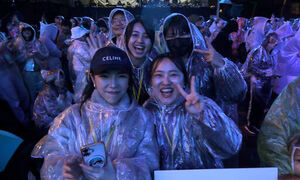11월 중간선거서 적극 활용을
미국에서는 공직에 출마한 정치인들과 선출직 공무원들이 유권자들과 소통하는 최신 기술을 사용하는 데 앞장서는 경우가 많다.
70년도 더 지난 과거에 프랭클린 D 루스벨트 대통령은 ‘노변 대화’란 라디오 프로를 이용하여 자신의 정책 목표를 국민들에게 알렸다. 그 후 매사추세츠주 출신의 존 F 케네디란 이름의 젊은 상원의원이 1960년 TV 방송 후보토론을 활용하여 현직 부통령을 누르고 대통령에 당선되었다. 로널드 레이건 대통령은 대통령 선거유세 때 전국의 유권자들에게 편지를 보내 보수파의 지지를 끌어 모아 당선되었다.
 |
| 나우팜 굽타 美 인터넷 홍보 전문가 |
버락 오바마는 2008년 대통령 선거에서 트위터와 페이스북 같은 사이트를 이용하여 지지자를 모으고 투표장까지 끌어냄으로써 인터넷 정치홍보의 새 경지를 개척했다.
아주 최근까지도 선거에 출마한 후보들은 인터넷 광고에 큰 노력을 기울이지 않았다. 연방정부나 주정부의 공직에 출마한 정치인들은 주로 TV 광고에 여전히 관심을 집중하고 있다.
공화당 전국위원회의 인터넷 담당 전문가로 활동했던 사이러스 크론은 정치 후보들이 TV에 중독돼 있다고 지적했다. 크론은 이렇게 설명했다. “선거운동의 TV 활용은 미국인들의 외국산 석유에 대한 의존과 증세가 비슷하다. 미국인들은 외국산 석유에 대한 의존을 버려야 한다고 생각한다. 즉 대체 에너지원의 개발이 필요하다는 것을 인식하고 있다. 그러나 미국인들은 계속 주유소를 찾는다.”
미국의 광고 분석 회사인 보렐은 올해 정치 선전에 42억달러가 지출될 것으로 추산한다. 그러나 온라인 광고에 배정되는 돈은 그 1%에 불과할 것으로 보인다. 만약 후보들이 최근의 당선사례를 본받아 인터넷 광고를 본격 활용할 경우 그 액수는 훨씬 더 올라갈 수 있다.
정치에 관한 정보를 얻기 위해 인터넷을 이용하는 미국인의 수가 증가하고 있다. 미국의 유권자 가운데 55%와 인터넷 사용자의 74%가 2008년 선거 때 인터넷을 통해 선거운동에 참여했거나 관련 정보와 뉴스를 얻은 사실이 퓨 리서치 센터 조사결과 밝혀졌다. 2000년에 선거 관련 정보를 얻기 위해 인터넷을 이용한 성인의 비율은 18%에 불과했다.
미국인들의 인터넷 이용 시간이 늘어남에 따라 기업들은 인터넷 광고에 더 많은 돈을 쓰고 있다. 올해 전체 광고시장 규모는 1610억달러이며 이 중 10%가 채 안 되는 광고비가 인터넷 광고에 지출될 것으로 추정된다. 이런 상황에서 인터넷의 정치 광고 비율이 그처럼 낮은 이유는 무엇일까.
만약 정치광고가 단조로운 정지영상이나 배너광고에 그친다면 1%란 비율에도 일리가 있다. 그러나 인터넷을 이용한 창의적인 광고를 방해했던 비싸고 복잡한 장벽을 무너뜨리는 신기술이 개발됨으로써 상황이 크게 달라졌다. 이는 단지 비디오 동영상을 광고에 이용하는 수준에 그치지 않는다.
공직에 출마한 정당 후보들은 이제 TV 광고를 인터넷에 연장시킬 뿐만 아니라 계속 새로운 내용으로 바꾸어 유권자들의 반응을 신속하게 유도할 수 있는 창의적인 도구로 사용할 수 있다. 이런 역동적인 광고는 유권자들의 관심을 끌 뿐만 아니라 선거운동과 여론조사 및 서명 운동에 참여시키는 등 여러 가지 기여를 하도록 유도할 수 있다.
공화당의 스코트 브라운 후보가 매사추세츠주 연방 상원의원 보궐선거에서 의외의 승리를 거둔 것은 사용 가능한 모든 인터넷 광고 수단을 적극적으로 활용했기 때문이다. 폴리틱스 매거진이 보도한 바와 같이 브라운은 11월 선거운동에 인터넷을 이용하는 방법의 귀감이 될 것이다.
나우팜 굽타 美 인터넷 홍보 전문가
워싱턴타임스·정리=오성환 외신전문위원
Candidates kicking the TV ad addiction
By Anupam Gupta
Political candidates and elected officials have often been at the forefront of using new technology to communicate with voters. More than 70 years ago, President Franklin D. Roosevelt harnessed the power of radio with "fireside chats" to build support for his agenda. Years later, a young senator from Massachusetts named John F. Kennedy used television to best his opponent - the sitting vice president - in the 1960 presidential debates. Direct mail helped Ronald Reagan tap into conservative support throughout the country and rise to the highest office in the land.
In more recent times, liberal bloggers and the antiwar "netroots" fueled Howard Dean's long-shot campaign for president in 2003. President George W. Bush's White House took to the Internet by webcasting events, podcasting his weekly radio address and hosting "Ask the White House" Web chats for citizens at www.whitehouse. gov. And Barack Obama's 2008 campaign broke new ground by using social media sites such as Twitter and Facebook to organize supporters and turn out the vote.
There's one aspect of online communications where political campaigns haven't led the way. Until very recently, candidates had not directed much effort toward advertising online. Candidates in federal or statewide races continue to be focused primarily on television advertising.
Former Republican National Committee online guru Cyrus Krohn has likened television to an addiction for campaigns. "The use of TV in campaigns is kind of like our dependency on foreign oil," Mr. Krohn said. "We know we have to get off it. We know we need to find alternative energy sources. But we keep on going back to the pump."
After the recent U.S. Supreme Court decision in the Citizens United vs. Federal Election Commission case, the advertising analysis firm Borrell Associates Inc. estimates $4.2 billion will be spent this year on political advertising. However, it estimates that just 1 percent of that amount will be dedicated to online advertising. If candidates gearing up for 2010 follow the example of recent successful campaigns, that projection could turn out to be quite low.
An increasing percentage of Americans are turning to the Internet for information about politics. The Pew Research Center found that 55 percent of the entire voting-age population in the U.S., and 74 percent of Internet users, went online during the 2008 election to take part in or get news about the campaign. In 2000, just 18 percent of all adults went online for information about the election.
As more Americans spend a greater amount of time online, businesses are spending more on Internet advertising. A Magna report projected online advertising to be just shy of 10 percent of the $161 billion advertising market this year. So, why are the forecasts for online political advertising so low?
If political advertising were just about static banner ads and boring blue links, 1 percent might make sense. However, new technology is available that completely breaks down the cost and complexity barriers that prevented campaigns from being creative with online advertising. This isn't just about sticking video in a banner ad. Candidates can now extend television advertising online with ads that are continually refreshed and serve as an innovative tool for rapid response. These dynamic ads grab voter attention and engage them in the campaign through social media links, polls, sign up forms and other interactivity.
Scott Brown's upset victory in Massachusetts was fueled in part by his aggressive approach to using all the Internet tools at his disposal. As Politics Magazine reported, Mr. Brown's campaign could serve as the model for campaigns "hoping to harness the Internet this November to propel everything from online fundraising to GOTV (get out the vote) efforts."
Mr. Brown's winning campaign dedicated 10 percent of his advertising budget to the Internet. For his underdog campaign, using targeted dynamic online video advertising was a cost-effective way to spread key campaign messages and engage potential supporters who were turning increasingly to the Internet for information about the hotly contested race. Instead of the dull banner ads, Mr. Brown's online video spots engaged voters with sight, sound and direct interaction with the campaign. In the late stages of the campaign, more than 46,000 people chose to watch Mr. Brown's online video ads on the Web site of the Boston Herald. Those voters viewed more than 267 total hours - or 11 days' worth - of the video messages from his campaign.
On Jan. 19, Scott Brown won by 107,000 votes, securing the biggest upset in modern political history.
Every election brings the potential for change. The 2010 midterms may be remembered for being the election in which campaign technology tools finally matched the dynamic nature of politics.
best:이기다 long-shot:승산이 없는 시도 netroot:네트루트, 민주당의 온라인 선거운동 조직
Copyright ⓒ 세계일보. 무단 전재 및 재배포 금지
![[설왕설래] 덴마크, 86년 만의 시련](http://img.segye.com/content/image/2026/01/07/128/20260107516825.jpg
)
![[세계포럼] 마두로 몰락, 정세격변 대비해야](http://img.segye.com/content/image/2026/01/07/128/20260107516817.jpg
)
![[세계타워] ‘노골적 이익중심외교’의 등장과 함정](http://img.segye.com/content/image/2026/01/07/128/20260107516794.jpg
)
![[기고] ‘K방산’에도 수사학이 필요하다](http://img.segye.com/content/image/2026/01/07/128/20260107516747.jpg
)








